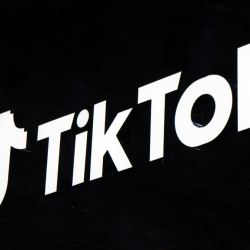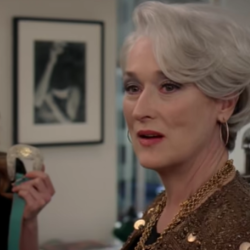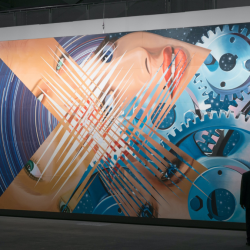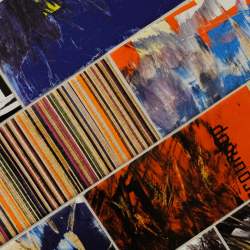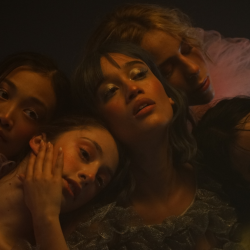Us marketing communications professionals generally use trend analyses to predict the tendencies that will shape consumer behaviour and to determine spot-on communication strategies. We wanted to reverse these analyses. Using MediaCat Turkey’s archives we went back a decade. We examined the trend analyses published in MediaCat’s issues between 2010-2015 and evaluated the predictions retrospectively, dividing them in four categories: the ones we saw and raised, the ones we missed, the ones that have just now found meaning and the ones we couldn’t predict.
Our aim wasn’t to measure the accuracy of trend predictions of marketing communications professionals. Sometimes some trends seem more prominent than they are when they first appear and some are understated. Accordingly, we believe that being able to imagine the distant future is more important than making the most accurate prediction.
THE ONES WE SAW AND RAISED
From random acts of kindness to brand purpose
Do you remember the new method marcomm professionals discovered in the beginning of the 2010s? Brands would do random acts of kindness and briefly make people feel better. Do you vaguely recall the coke vending machine that would give away gifts to everyone? With time these random acts of kindness became more systematic. How we define kindness evolved from giving away free pizza with a coke to include bigger, more grandiose things and we entered the 2020s with the concept of “brand purpose.”
From generous consumers to activist consumers
The “generous” consumers of the 2010s would ask brands to make social contributions. A symbol of the times, TOMS did exactly this: a pair of shoes for you, a pair for someone who needs it. The “One for One,” so to speak. The “generous” consumers who expected brands to be good and supported social volunteering, levelled up with time and became “activists.”
To put it another way, the activist consumers of the 2020s not only give away a pair of shoes to the needy, but also want to teach them how to make the shoes and even find micro loans to help them manufacture the shoes.
From online status to “influencers”
The trend analyses from the beginning of the 2010s talk about how the impact of social media accounts that reach large audiences through likes and retweets will shape marketing communications. These analyses, which emphasize that likes and retweets are a symbol of online social status, explain why brands should interact with accounts that hold such status.
We now call these accounts “influencers” and creating impact is now a profession. There are even new generation agencies now that bring together brands with these accounts: influencer agencies.
Rise of the east
The trend analyses we’ve scrutinised predict that by the mid-2010s China’s total retail sales will have exceeded that of the US and that the East will have replaced the West, with Eastern consumers predominantly setting the global marketing trends.
Perhaps China’s retail sales have not exceeded that of the US yet, but we can clearly state that the East (South Korea, China and India) has increased its impact on both the global economy and popular culture (K-Pop, Squid Game and good and services brands develop solely for the Chinese market).
Sharing economy
The final prevalent trend of the 2010s was the sharing economy. The hipster millennials’ approach to ownership led to property losing its value. Today the decline of property ownership is more of a necessity than a choice.
THE ONES WE MISSED
Is the tablet the medium of the future?
At first, smaller phones were preferrable. The iPhone reversed this trend and every year the phones got bigger and bigger. When the iPad was launched in 2010, it was deemed as a revolutionary device that would transform our consumption. It would replace the laptop, transform publishing and recreate education.
But that’s not what happened.
We still use tablets, but more for variety… the tablet didn’t deliver on its promises; it didn’t become another medium and remained as a way to entertain children. At least for now.
Is viral marketing the future?
“Will you make a viral campaign for us? We want it to grow on its own, without the need to invest in media, spreading from screen to screen”. We haven’t heard that in a while, have we? The dream of low-cost production and high organic reach was overcome by the algorithms. We saw that unless you invest some money in social media accounts with millions of followers you couldn’t reach as many people as you wanted.
But we should remember that algorithms weren’t the only issue here. Articles and books about different aspects of viral marketing, like word-of-mouth marketing, gave useful insights for a good campaign, but the industry learned that the success of a campaign cannot be measured by its virality and digital-specific media dynamics surfaced.
Is 3D broadcasting the future?
Three-dimensional broadcasting promised to fundamentally transform media consumption. Production companies and broadcasters invested heavily in 3D.
Despite the efforts and the million-dollar productions, 3D broadcasting wasn’t as big of a hit with the consumers. It was perceived as difficult and problematic, and slowly doubled back to movie theatres.
THE ONES THAT HAVE JUST NOW FOUND MEANING
Virtual (VR) and augmented reality (AR)
Virtual worlds have long tried to make a stride from science fiction to cinema, and to marketing. Especially between 2010-2011, brands invested in prominent projects but the investments stopped, perhaps because they didn’t get tangible results. In 2016, Pokémon Go sparked another interest in the field but it failed to bring the AR-VR technologies to the fore of our daily lives, regardless of the game’s massive success.
But we believe we’re due for a third wave and this might be it. The hype around the Metaverse has turned heads again to VR.
Matrix Resurrections (2022) will contribute to this. But more importantly, in 2021 Oculus VR headsets exceeded XBOX in sales, with 8.1 million headsets sold. Could this be it?
QR codes
Another technology that was ahead of its time in the 2010s was the QR code. It first appeared at key visuals, moving later to finance. During the 2010s, however, it failed to grow as expected — until the pandemic.
The need for “contactless” brought on by the pandemic made QR codes useful again. From pulling up restaurant menus to contactless ATM withdrawals, the QR code secured its place in our daily lives.
GIF
“Gif” or “jif?” That was the main discourse around GIFs in the 2010s. Thanks to Gen Z’s use of written and visual communication, GIFs were rediscovered in the beginning of the 2020s. How else would you demonstrate your reaction to the “cringe” video your friend sent you? GIFs are now a part of our everyday life and have an increasing impact on visual storytelling.
THE ONES WE COULDN’T PREDICT (Black Swan)
It’s true that cryptocurrencies were invented in 2009 but they didn’t leave a mark on marketing in the 2010s. We were oblivious to their existence and their looming impact. We were too preoccupied with 3D glasses.
This is how big changes happen.
While we dreamt of robots and flying cars it was the internet and social media that changed the world. Can you imagine, Back to the Future’s (1985) prediction of 2015 for high technology included fax machines. We can say we’re better off.


























